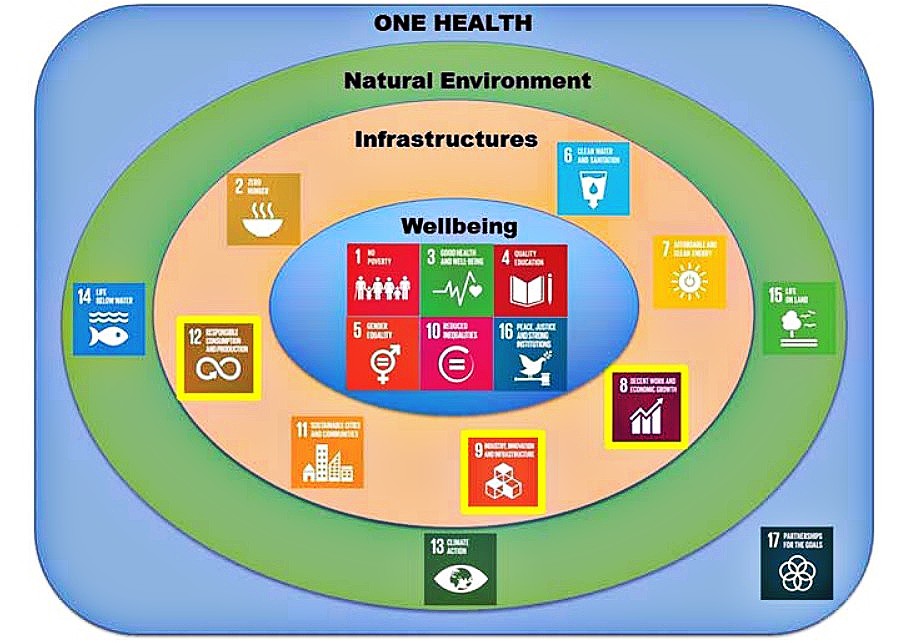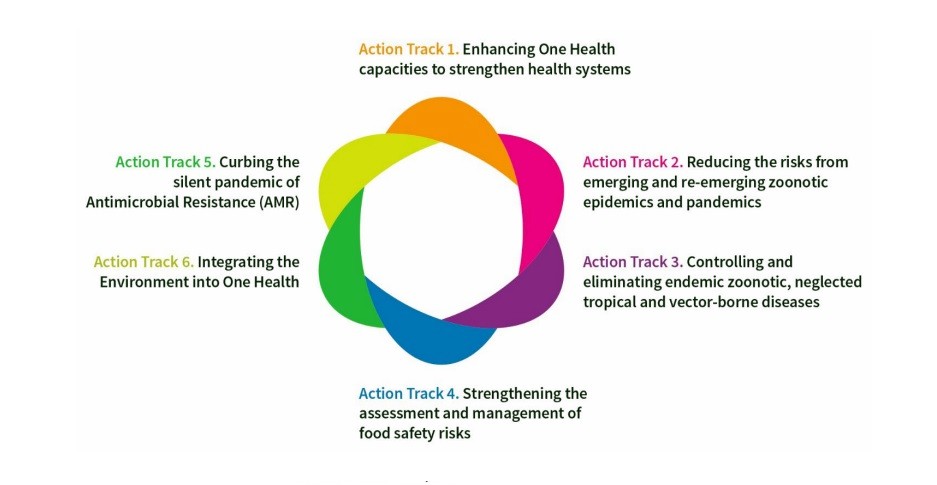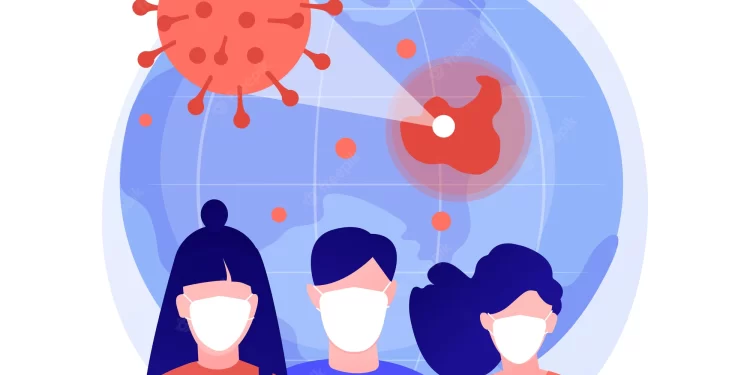In the midst of all of the bad news – war, inflation, food insecurity, and COVID – there is a sliver of potentially good news that can have important benefits for all: The renewed focus on the prevention of future pandemics – and it’s happening in the midst of renewed attention to One Health as a driving concept in global public health.
Let’s start with the big picture: The Sustainable Development Goals which have a target of 2030 to achieve their aims. A valuable paper entitled “Road Map to a One Health Agenda 2030,” published in 2017, put it this way:
“The Sustainable Development Goals (SDGs) offer a framework and unique opportunity for this. Through analysing individual SDGs, we argue the feasibility of an OH [One Health] approach towards achieving them. Feasibility assessments and outcome evaluations are often constrained by sectoral politics within a national framework, historic possession of expertise, as well as tried and tested metrics. OH, calls for a better understanding, acceptance, and use of a broader and transdisciplinary set of assessment metrics.”
The authors took it a step further in providing their easy-to-understand picture of how One Health and the SDGs relate:

Back to the present: The Bretton Woods pronouncement – A clear call to action from the World Bank Group (WBG) and a new plan of action from four UN technical agencies
The creation this year of the Financial Intermediary Fund for Prevention, Preparedness and Response (FIF) comes at a time when infectious disease outbreaks already – or potentially – are causing or would cause grievous harm to people, economies, and social cohesion. It certainly provided us with a big dose of measured optimism.
Encouraging is the statement on October 14, 2022, of the Development Committee (Joint Ministerial Committee of the Boards of Governors of the Bank and Fund on the Transfer of Real Resources to Developing Countries. Specifically, this is what they said:
“…We welcome the approval of the Financial Intermediary Fund (FIF) for Pandemic Prevention, Preparedness, and Response (PPR), and the $1.4 billion in contributions pledged to the fund so far. Supported by the G20 countries, as well as other donors, and in partnership with the WHO, the FIF will allocate financing where investments are most urgently needed to bolster pandemic PPR and fill key capacity gaps. We ask the WBG to continue strengthening coordinated, inclusive, and expert-based action with multilateral partners for a One health approach. This and other global health initiatives are essential to building the core capacities needed to prevent and contain future pandemics, while also strengthening public health systems and moving towards universal health coverage.”
Most significantly, the World Bank press release that has just come out is crystal clear:
“Pandemic Prevention Is the Ultimate Investment for Humanity
Prevention is a global public good that requires an integrated, risk-based approach to prioritize spillover hot spots, ensure compliance with international health standards, and promote country ownership. The good news is that these investments are highly effective: actions to prevent disease outbreaks carry an estimated rate of return of up to 86 percent, and most of these actions will result in significant co-benefits.”
And there’s more (bolding added):
“There is a strong economic case for One Health: the cost of prevention is moderate compared to the cost of managing and responding to pandemics. The World Bank’s global estimate of prevention costs guided by One Health principles ranges from $10.3 billion to $11.5 billion per year, compared to the cost of managing pandemics which, according to the recent estimate by the G20 Joint Finance and Health Taskforce, amounts to about $30.1 billion per year.
There has never been a better time to adopt One Health as an investment in humanity’s future. The World Bank will continue to engage client governments, multilateral organizations, and other stakeholders to embed a One Health approach around the world.”
The newest creation of the World Bank and the World Health Organization, the “Prevention, Preparedness and Response Financial Intermediary Fund” has so far already received pledges of $1.4 billion. Not enough of course, but it is just getting organized, and in terms of its stated mission, it is well-positioned to carry out what has been expressed in the World Bank press release.
The four major agencies engaged in One Health action – FAO, UNEP, WHO and WOAH – have come together on 18 October 2022 to launch the Quadripartite One Health Joint Plan of Action designed to prevent future zoonotic pandemics and to promote health sustainably through the One Health approach.
The event was co-organized by the four Quadripartite organizations with support from Federal Ministry for Economic Cooperation and Development (BMZ), the German aid agency Deutsche Gesellschaft für Internationale Zusammenarbeit (GIZ), the Museum für Naturkunde, and the Foundation Healthy Planet – Healthy People.
The commitments of the four organizations are outlined here:
The Joint Action Plan is built around six interdependent Action Tracks that collectively contribute to
achieving sustainable health and food systems, reducing global health threats and improving
ecosystem management:

The reaction from global leaders: G7 and G20 national policies
As previously described, the statements by these powerful country groups have approved resolutions and process steps that use the “One Health” concept.
Currently, the chair of the G20 is Indonesia which has been making important strides in developing an integrated surveillance system, held a conference on implementing and financing One health in June 2022, and will host its last meeting as chair in November 2022. We will need to see what happens there.
In 2023 the chair is transferred to India, a country in which “Three recent policy initiatives have marked the mainstreaming of One Health in India: a National Expert Group on OH as a multi-sectoral transdisciplinary collaborative group, a National Institute of One Health at Nagpur, Maharashtra and Integrated Public Health Laboratories.”
The leadership of the G20 shapes the direction of its members, and as these two countries are at the very least informed, they can be expected to raise the subject; there is thus a very real possibility of arriving at the next level of concrete decisions.
In addition, the European Union has been forward-looking in terms of One Health, launching its well-funded, multi-year One Health European Joint Programme (OHEJP), now in its 4th edition. In line with the “Prevent-Detect-Respond” concept, the OHEJP reinforces collaboration between institutes through dedicated Joint Research Projects, Joint Integrative Project, and education and training in the fields of Foodborne Zoonoses (FBZ), Antimicrobial Resistance (AMR), and Emerging Threats (ET).
OHEJP has established partnerships between 44 major food, veterinary, and medical laboratories and institutes across 22 member states in Europe, including the Med-Vet-Net-Association. For example, the Norwegian Institute of Public Health and the Norwegian Veterinary Institute work closely with 42 other institutions from 21 countries in Europe with a total budget of almost 90 million Euros, making it the largest of its kind in Europe.
And in the United States, for example, Senator Gillibrand of New York, has recently announced a “One Health Security Act” which would include at the highest level of the Executive Branch a One Health Security Council as described in the press release.
What is the bottom line for the future?
In the past, we have seen good intentions fall by the wayside when more immediate, and perhaps politically sensitive, issues take the spotlight. It can happen with One health, especially in this time of a global pandemic and countries on the tip of recession as a result of the War in Ukraine.
Understandable, but “we” cannot let it happen for our and the sake of future generations.
Editor’s Note: The opinions expressed here by Impakter.com columnists are their own, not those of Impakter.com — In the Featured Photo: Abstract concept vector illustration source: Freepik










